Submitted by WA Contents
Shigeru Ban signs agreement to design new homes for thousands of refugees in Kenya
Kenya Architecture News - Jul 21, 2017 - 08:56 18864 views
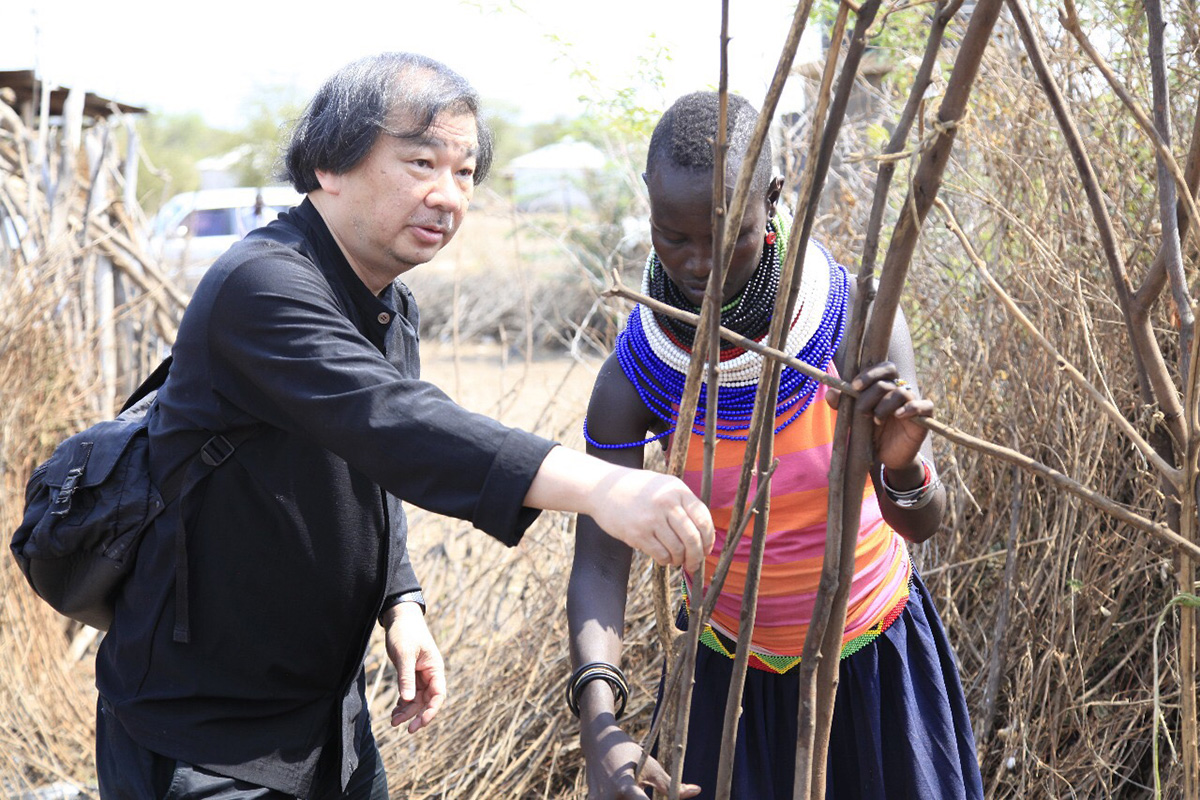
Socially minded Japanese architect Shigeru Ban, has signed a new agreement to design new homes for thousands of refugees in Kenya. Ban's new shelters will be designed by being used locally available and eco-friendly materials without any need of little technical supervision or construction techniques. This is the first time UN-Habitat will focus specifically on refugee housing in Kenya.
Pritzker Prize-winning architect Shigeru Ban has officially begun his collaborative efforts with UN-Habitat to design up to 20,000 new homes for refugees, in the Kalobeyei Refugee Settlement in Kenya - which hosts a population of 183,000 individuals by June 2015.
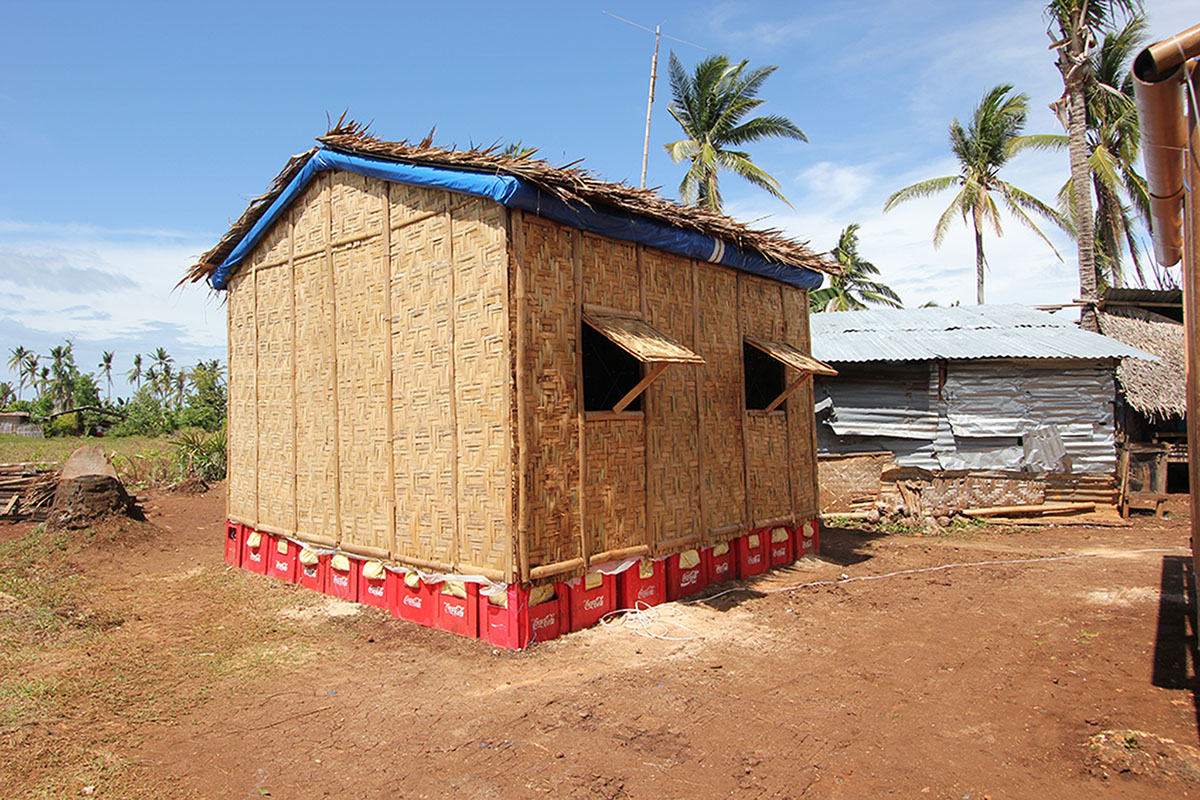
Paper Log House in Cebu, Philippines, 2014. Image courtesy of Shigeru Ban Architects
Ban said that "he was prompted to get involved after hearing about the immense challenges facing humanitarian agencies in providing shelter to tens of thousands of refugees arriving in the area from countries such as South Sudan. Over 17,000 refugees have arrived this year."
According to UN-Habitat, over 17,000 refugees have arrived this year, so it needs extra accommodation spaces for thousands of refugees as the number is expected to rise to because of the refugee influx.
More recently, Ban visited the site to see the existing conditions and he met with refugees and the local community and looked at the existing structures housing thousands of displaced people, to help assess the current shelter and design needs. Ban explained his reasons for signing the agreement and vision for the project.
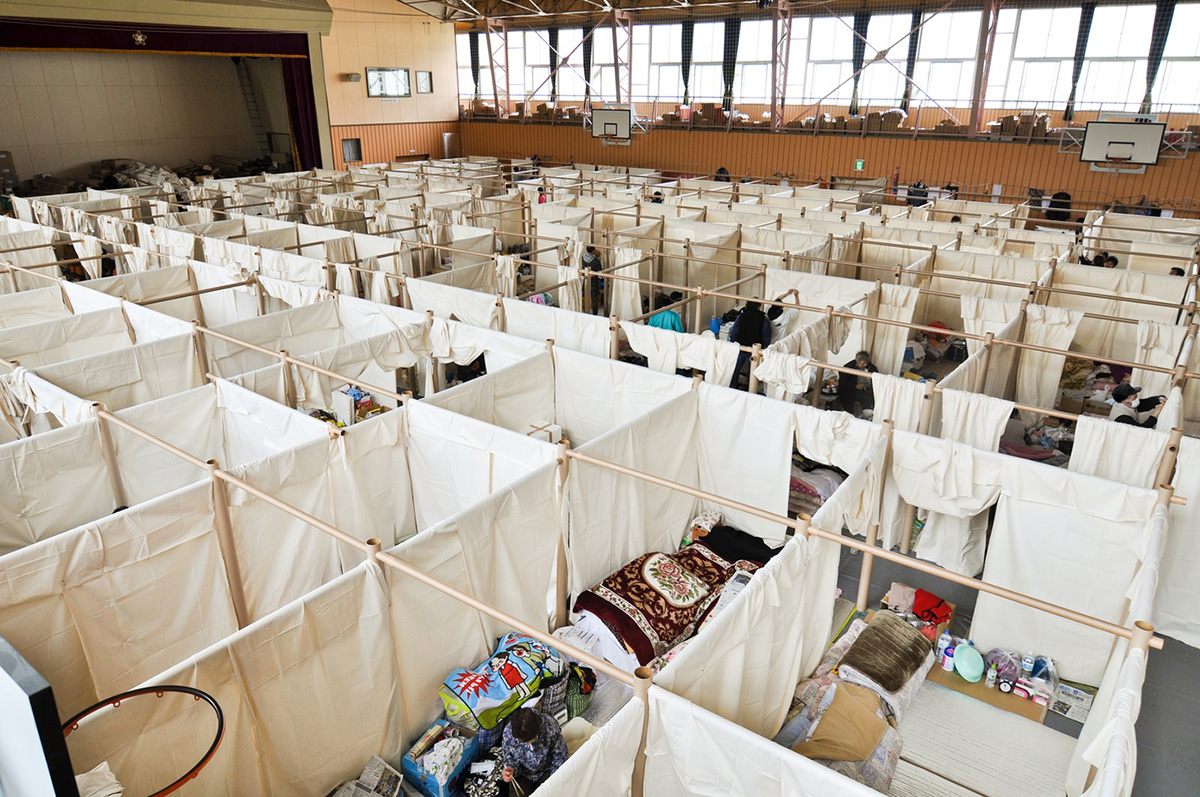
Paper Partition System 4 in Iwate, Japan, 2011 as part of NGO Voluntary Architects' Network (VAN). Image courtesy of Shigeru Ban Architects
"The key thing will be to design and construct shelter where no or little technical supervision is required, and use materials that are locally available and eco-friendly. It’s important that the houses can be easily maintained by inhabitants," said Shigeru Ban.
"it was important to him to learn about how local people construct, and to transfer his knowledge and experience of providing disaster-related shelter," he added.
Shigeru Ban, 59, is also well-known with his fast-built and eco-friendly structures constructured in many disaster places of the world for local communities. Ban designed a Paper Emergency Shelter for UNHCR in Byumba Refugee Camp, Rwanda, 1994-99 as part of NGO Voluntary Architects' Network (VAN) and Paper Log House in Kobe, Japan in 1995.
In 2014, Ban designed a new version of Paper Log House in Cebu, Philippines. Japanese architect also designed Onagawa Container Temporary Housing in Miyagi, Japan in 2011 to provide a temporary housing solution for many local people.
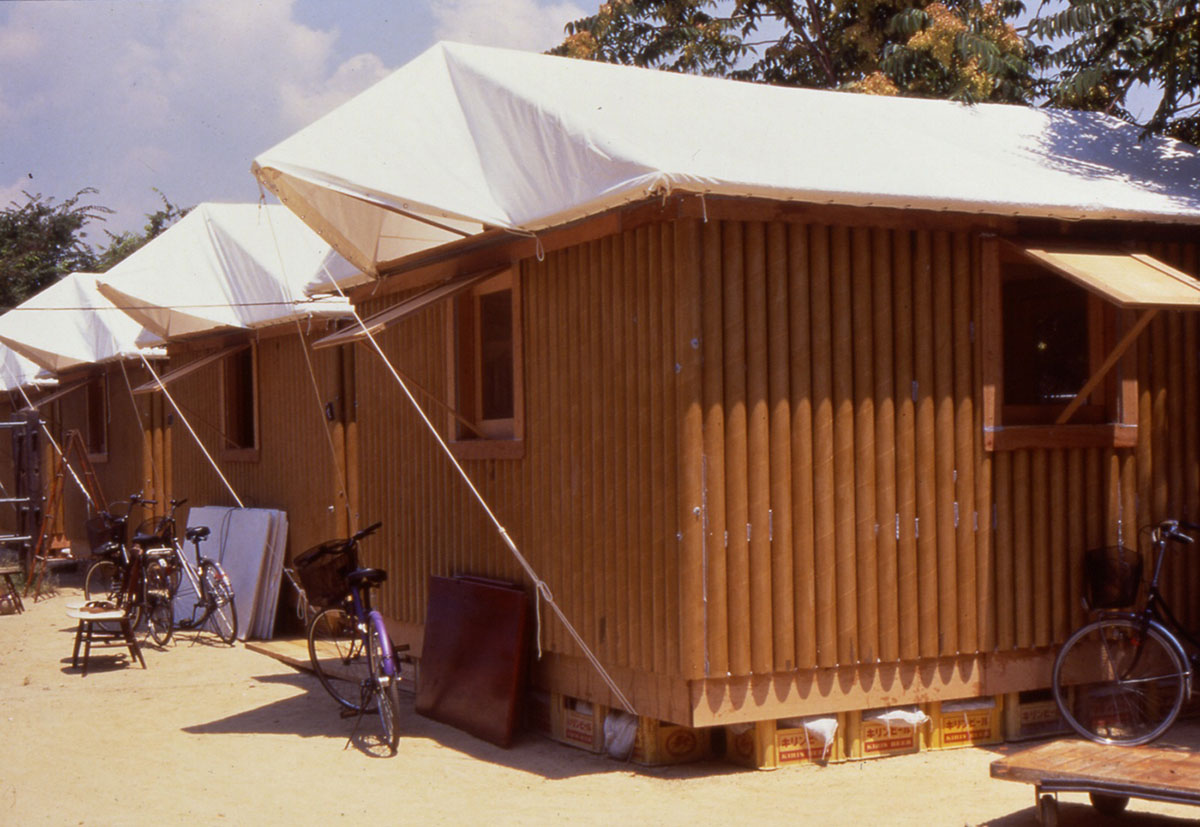
Paper Log House in Kobe, Japan in 1995. Image © Takanobu Sakuma
The agreement is conceived as an important step towards providing basic humanitarian services in Kalobeyei, which is home to over 37,000 refugees, mainly from South Sudan and Somalia. It was only built to house approximately 45,000 individuals, but the number is expected to rise to because of the refugee influx.
"Shigeru is qualified for the project many say. He has successfully completed over a dozen displacement related shelter projects around the world in countries like Italy, Turkey and Nepal, using basic materials like cardboard, wood, and beer crates," stated UN-Habitat.
"He’s noted for helping to design shelter made from paper for nearly 2 million Rwandan refugees displaced in the 1990s following the civil war."
There will be some major constraints on the refugee site. The site has low water supply, deforestation, and extremely hot temperatures, and sometimes rainy seasons cause heavy flooding and it can damage many shelters, if they are not built with durable materials and not be transformed to another place in case of urgency.

Shigeru Ban visited the site. Image © UN-Habitat
Kalobeyei is located in a remote location and that creates many obstacles. There are no commercial flights to the area, and it can take up to 3 days to get there by road for the capital, Nairobi, where some materials may have to be sourced from.
UN-Habitat the UN agency mandated to guide sustainable development, particularly in the area of shelter, will work with Ban on the project to ensure its objectives are achieved.
"The shelter designs have to comply with the national regulations for housing while responding in a responsible manner to local climatic conditions and challenges, providing replicable sustainable solutions to shelter," Said Yuka Terada, UN-Habitat Project Coordinator.
"UN-Habitat’s approaches are strongly participatory and the relevant county officers as well as the representatives from refugee and host community will have an input in the design process," added Terada.
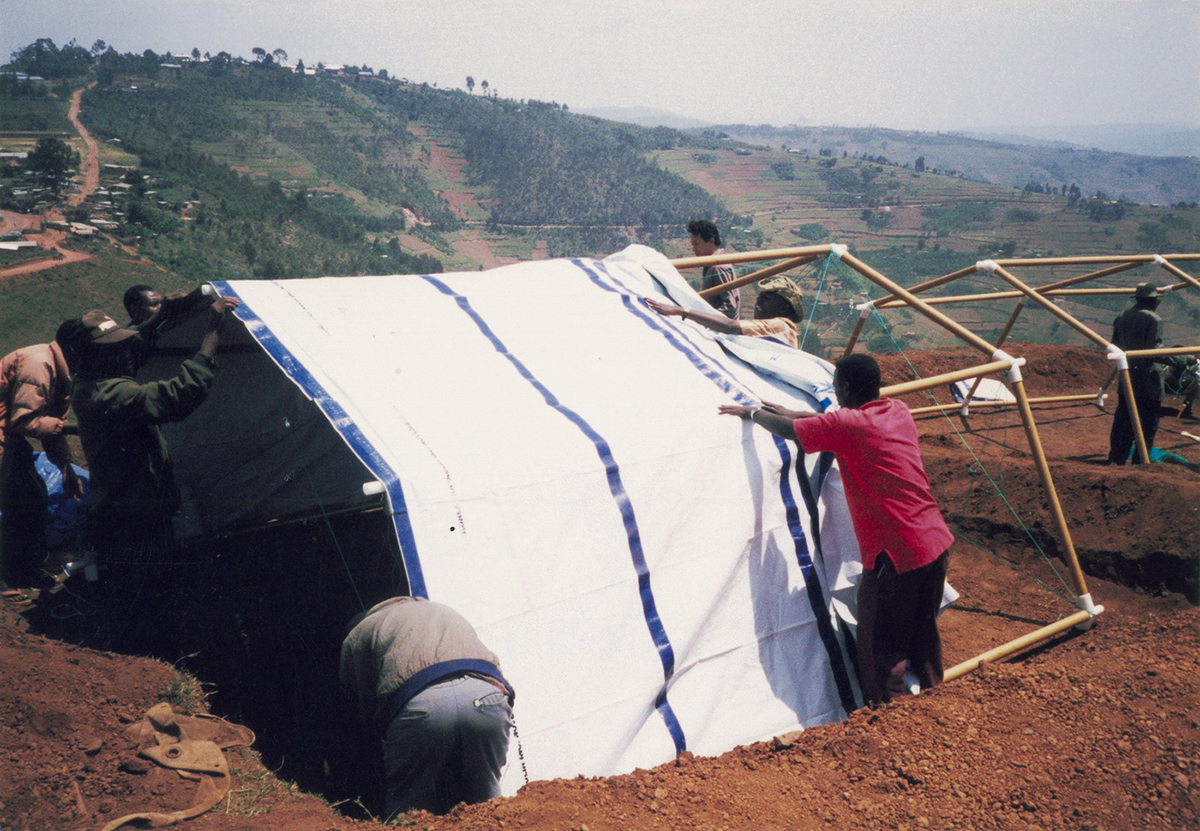
Paper Emergency Shelter for UNHCR in Byumba Refugee Camp, Rwanda, 1994-99 as part of NGO Voluntary Architects' Network (VAN). Image courtesy of Shigeru Ban Architects
UNHCR’s Representative in Kenya, Raouf Mazou, welcomed Ban’s willingness and commitment to help sort out the shelter issue in Kalobeyei, and find durable and sustainable solutions to housing that benefit both refugees and the local host community.
"We are grateful for Shigeru’s support. Providing decent and lasting shelter is key to addressing the needs of thousands of refugees in Kalobeyei. A successful partnership on shelter such as this will help to empower refugees, and reduce dependency by giving them stable and durable homes to live in," said Raouf Mazou.
"It will also go along way to improving the socio-economic climate in Kalobeyei, which will benefit not just the displaced, but the host community too."
Ban’s design will be tested on 20 shelters first, and if successful, will be rolled out to replace existing structures. But resources to construct the homes will still need to be found.
The Kalobeyei Settlement was established in 2015 between the Turkana County government, UNHCR and other partners to provide integrated services to refugees and local host communities. Acknowledging the need for a more sustainable developmental approach to refugee crisis’s, knowing that on average many displaced persons spend more than 16 years living as refugees in temporary shelter.
Running his studio Shigeru Ban Architects in Tokyo, Paris and New York, Shigeru Ban designs a wide range of projects, particularly using bamboo, wood and local materials, in many countries of the world.
Top image: Japanese Architect, Shigeru Ban during recent his visit to Kalobeyei Settlement in Kakuma. Image © UN-Habitat
> via UN-Habitat
